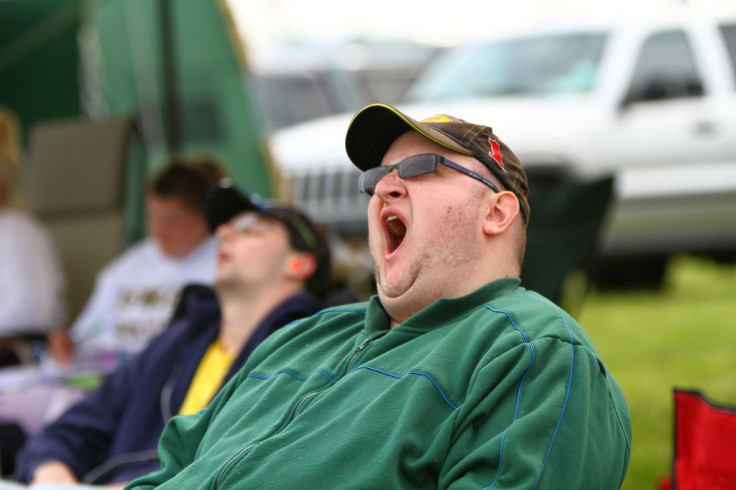Sleep Apnea More Than Doubles Risk For Car Accidents: The Dangers Of Drowsy Driving

New evidence adds to the already compelling case that driving a car while not properly rested produces similar risks as driving drunk.
The recent study was published in the journal Sleep and found people with obstructive sleep apnea were 2.5 times more likely to be the driver in an accident than people without the sleep disorder. Fortunately, the study also found continuous positive airway pressure, or CPAP, therapy was effective at reducing the rates by up to 70 percent if the person used the technique for an average of four hours every night.
"Excessive daytime sleepiness is a common symptom of obstructive sleep apnea, which can cause you to awaken in the morning feeling tired and unrefreshed despite a full night of sleep," said Dr. Timothy Morgenthale, president of the American Academy of Sleep Medicine, in a statement.
Insufficient sleep has been officially classified as a public health epidemic by the Centers for Disease Control and Prevention, as nearly 40 percent of people report unintentionally falling asleep at least once in the past month. On their own, the dangers of sleep deprivation include a suppressed immune system and moderate cognitive impairment. But the risks increase even further when those setbacks are applied to a complex activity, like driving a car. In 2010, a study found 20 to 25 hours of sleep loss resulted in the same levels of depleted brainpower as a blood-alcohol concentration of 0.10.
Obstructive sleep apnea, a condition in which the body’s airway gets blocked and results in difficulty breathing, may produce many of the same effects. In the latest study, Swedish researchers used data from the long-term data collection project STRADA, the Swedish Traffic Accident Registry. The team looked at 1,478 sleep apnea patients with an average age of 54 years. Comparing accident rates among a control population of more than 635,000, they found drivers in accidents were significantly more likely to suffer from sleep apnea. People who got only five hours of sleep, experienced daytime sleepiness, and regularly took sleeping pills also faced greater accident risks.
"Effective identification and treatment of sleep apnea is essential to reduce avoidable, life-threatening accidents caused by drowsy driving," Morgenthale said.
Obstructive sleep apnea is decidedly less common than general sleep deprivation. Roughly one in five American adults has a mild case, while one in 15 has a moderate to severe case. Meanwhile, a recent Gallup poll found 40 percent of the country gets less than the recommended amount of sleep each night. Collectively, these missed hours account for 6,400 traffic-related deaths, which make up 21 percent of the U.S. total, according to a 2014 report. This is an increase from the 16.5 percent of deaths a previous 2010 study found.
For the dangers of drowsy driving, drunk driving still remains the greatest danger to motorists. The CDC reports that in 2012, alcohol-impaired drivers led to 10,322 deaths, which accounted for nearly a third of all traffic-related deaths in the U.S. Drunk driving’s annual cost is roughly $59 billion.
Drowsy driving, however, seldom receives a proportional amount of attention as drunk driving, which only adds to the risks. A deepening culture of casual sleepiness may account for Americans’ reluctance to sit passenger just because they feel a little groggy. For people with legitimate sleep disorders like obstructive sleep apnea, the latest research suggests people can dramatically cut their chances of an accident if they can identify their symptoms and take action.
For everyone else, the prescription is as simple as investing an extra hour or two of sleep each night. Given that 90 percent of the U.S. population drives a car to and from work, it’s a quick fix that can end up keeping everyone safe.
Source: Karimi M, Hedner J, Häbel H, Nerman O, Grote L. A Sleep Apnea-Related Risk of Motor Vehicle Accidents is Reduced by Continuous Positive Airway Pressure: Swedish Traffic Accident Registry Data. Sleep. 2015.



























